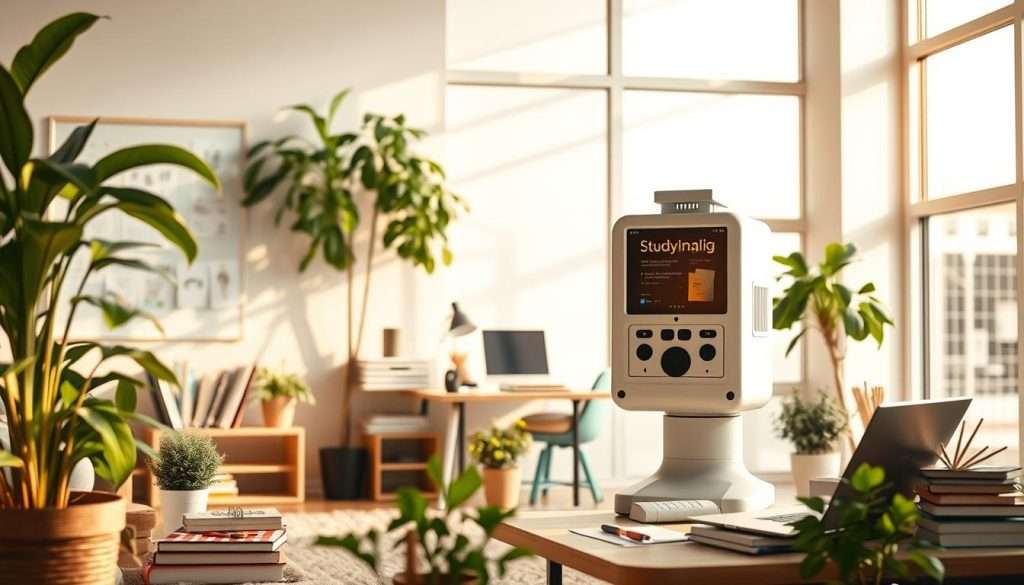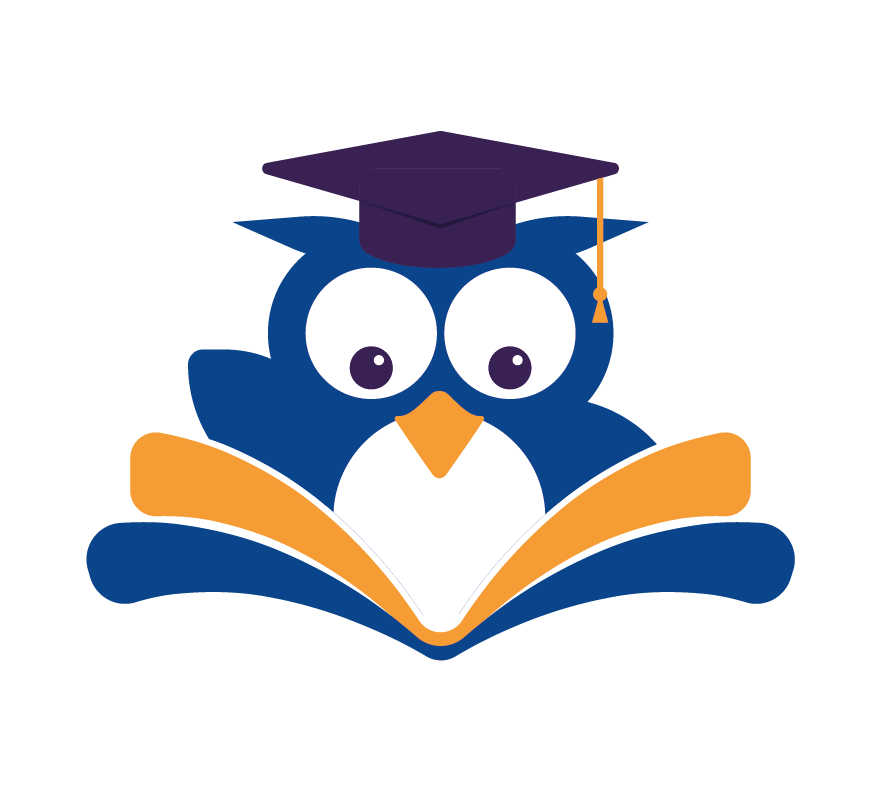Dr. Seuss once said, “It is better to know how to learn than to know.” We’re excited to share the power of self-directed learning with you. With the right mindset and strategies, you can learn new skills at your own pace.
Welcome to the world of DIY education! In this article, we’ll show you how to teach yourself new skills. We’ll cover everything from developing a growth mindset to overcoming common obstacles.
Whether you’re a student or a lifelong learner, you’ll find practical tips and motivation here. These will help you reach your goals.
Key Takeaways
- Discover the benefits of self-directed learning
- Learn how to develop a growth mindset
- Understand the importance of setting achievable goals
- Explore strategies for overcoming common obstacles
- Find practical tips for staying motivated
The Power of Self-Directed Learning
Today, you can teach yourself anything thanks to the internet. This change has made learning more personal and professional. It’s all about autonomous learning.
Learning on your own is more than just getting new skills. It’s about feeling in control and confident. This way, you can keep up with work changes easily.
Why Self-Teaching Is More Valuable Than Ever
In today’s fast world, learning quickly is key. Self-learning helps you stay ahead. It also makes you understand and remember things better.
Success Stories of Self-Taught Experts
Many people have reached their goals by teaching themselves. Famous experts have shared their paths to success. They overcame challenges through self-directed learning.
| Self-Taught Expert | Field | Key to Success |
|---|---|---|
| Chris Gardner | Finance | Persistent Learning |
| Steve Jobs | Technology | Innovative Thinking |
| Julia Child | Culinary Arts | Embracing Challenges |
Benefits of Autonomous Learning
Autonomous learning has many advantages:
- Flexibility in learning schedule
- Personalized learning experience
- Enhanced retention and understanding
- Increased confidence and autonomy
By choosing autonomous learning, you’ll handle today’s world better. You’ll reach your goals more easily and efficiently.
Teach Yourself Anything: The Step-by-Step Process
Starting to teach yourself anything needs a plan. Learning on your own is a skill that grows with time and effort. It’s all about having the right mindset.
Developing a Growth Mindset
Having a growth mindset is key for independent study. It means being ready for challenges and seeing failures as chances to grow.
Embracing Challenges and Failures
Seeing challenges as learning opportunities is important. When you hit a roadblock, view it as a chance to learn and get better.
Cultivating Curiosity and Persistence
Being curious and persistent is crucial. Ask yourself, “What do I want to achieve?” and “How can I get there?”
Setting Realistic Expectations
Setting achievable goals keeps you focused. Break down big goals into smaller tasks. Celebrate your successes along the way.
| Learning Style | Characteristics | Effective Strategies |
|---|---|---|
| Visual | Learns through images and videos | Watch tutorials, use diagrams |
| Auditory | Learns through sound and music | Listen to podcasts, audiobooks |
| Kinesthetic | Learns through movement and touch | Practice hands-on, conduct experiments |
Understanding Your Personal Learning Style
Knowing your learning style is vital. Are you visual, auditory, or kinesthetic? Knowing this helps you pick the best learning methods.
By following these steps and staying committed, you can learn anything on your own. The most important thing is to stay motivated and adjust your approach as needed.
Defining Your Learning Goals and Objectives
Setting clear learning goals is key to a successful self-directed learning journey. Knowing what you want to achieve helps you focus. This way, you make the most of the educational resources available.
Identifying What You Want to Learn and Why
Start by asking yourself, “What do I want to learn?” and “Why is it important to me?” This helps you understand your motivations. It ensures you’re spending your time on something meaningful.
For example, if you’re into DIY education, you might want to learn a new skill. This could be to boost your career or for personal satisfaction.
Breaking Down Complex Skills into Manageable Parts
Large skills or subjects can feel overwhelming. But breaking them down into smaller parts makes them more achievable. This way, you can focus on one aspect at a time. It makes learning less daunting.
Creating SMART Learning Objectives
To make sure your learning goals are effective, make them SMART:
Specific, Measurable, Achievable, Relevant, Time-bound
For example, instead of saying “I want to learn Spanish,” a SMART goal is “I will learn conversational Spanish by practicing for 30 minutes, three times a week, for the next six months.” This specificity helps you stay on track and measure your progress.
“The key is not to prioritize what’s on your schedule, but to schedule your priorities.”
By setting SMART goals, you’re prioritizing your learning. This sets you up for success.
Finding and Evaluating Learning Resources
Starting your self-learning journey opens up a world of resources. Finding the right ones is key to learning well.
Online Platforms and Digital Courses
Online platforms have a wide range of digital courses and online tutorials. They cover many interests and skills. These tools help you learn on your own.
Free vs. Paid Resources
Choosing between free and paid online resources is important. Free options are great for starting, but paid courses offer more structure and depth.
| Resource Type | Free | Paid |
|---|---|---|
| Online Courses | Coursera, edX | Udemy, Skillshare |
| Tutorials | YouTube, Khan Academy | Pluralsight, LinkedIn Learning |
Books, Podcasts, and Traditional Media
Books, podcasts, and traditional media are also valuable learning tools. They offer different ways to learn and can be a nice break from digital content.
Podcasts are great for learning on the move. Books give you deep insights into a subject.
Finding Mentors and Learning Communities
Connecting with mentors and joining learning communities can really help. These groups offer support, advice, and motivation.
“The best way to learn is in a community, where you can share ideas and learn from others.”
Evaluating Resource Quality and Relevance
Not all educational resources are the same. It’s crucial to check their quality and if they match your learning goals. Look at the author’s background, how current the resource is, and what others say about it.
By carefully choosing your learning resources, you can make the most of your self-learning journey. This will help you reach your goals more effectively.
Designing Your Personal Learning Curriculum
A well-crafted personal learning curriculum is key to effective self-directed learning. It helps you navigate your educational journey with clarity and purpose.
Structuring Your Learning Path
To begin, identify the core components of what you want to learn. Break down complex skills into manageable parts. Create a logical sequence that builds upon previous knowledge. This structured approach helps keep you moving forward and reduces confusion.
Creating a Realistic Timeline
Setting a realistic timeline is vital for staying motivated. Estimate the time needed for each part of your learning path. Make sure to include buffers for unexpected delays. This flexible planning lets you adapt to changes without feeling overwhelmed.
Balancing Theory and Practical Application
Theory lays the groundwork, but practical application solidifies understanding. Make sure your curriculum includes hands-on opportunities. This way, you reinforce your knowledge through real-world experience. Remember, “You need to create an environment to practice it in. You’re going to spend most of your time practicing and experimenting, not studying, so you need a way that you can easily exercise your skill and improvise.”
Building in Milestones and Checkpoints
Milestones and checkpoints are key for tracking your progress. They show how far you’ve come and what needs more work. Regularly checking your progress helps you make informed decisions about adjusting your learning path. This ensures you stay on track towards your goals.
By following these guidelines, you can create a personal learning curriculum that meets your needs. It enhances your independent study efforts and leads to successful skill acquisition.
Effective Learning Techniques for Self-Teaching
Learning how to learn is key to success in self-teaching. Using the right techniques can make a big difference. It makes learning new skills more enjoyable and effective.
Active Learning Strategies
Active learning means you’re not just reading or watching. It’s about engaging with what you’re learning. Try summarizing in your own words, making concept maps, or flashcards. This way, you’ll remember more and recall information better.

Spaced Repetition and Retrieval Practice
Spaced repetition and retrieval practice are great for learning. Spaced repetition means reviewing material at longer intervals to keep it in your memory. Retrieval practice is about recalling information from memory, not just re-reading it. Studies show these methods boost learning.
For example, instead of just re-reading, test yourself on key concepts. Use flashcards or online quizzes to make it fun.
The Feynman Technique for Deep Understanding
The Feynman Technique helps you understand complex ideas by explaining them simply. Break down the concept, explain it as if teaching a beginner, and find any gaps in your knowledge.
Explaining Concepts in Simple Terms
Start with a concept you want to learn. Explain it in simple terms, as if teaching a beginner. This clarifies your understanding and shows where you need more practice.
Identifying Knowledge Gaps
As you explain, notice any hard spots. These are knowledge gaps you need to fill. Identifying these helps you focus your learning.
Deliberate Practice Methods
Deliberate practice targets areas where you need to improve. It’s great for skills like playing music or coding. Focus on improving specific skills, not just practicing the same thing over and over.
| Technique | Description | Benefits |
|---|---|---|
| Active Learning | Engaging with material through summarization, concept maps, or flashcards | Improved retention and recall |
| Spaced Repetition | Reviewing material at increasingly longer intervals | Better long-term retention |
| Feynman Technique | Explaining complex concepts in simple terms | Deeper understanding and identification of knowledge gaps |
| Deliberate Practice | Focusing on specific areas for improvement | Enhanced proficiency in targeted skills |
Using these techniques in your self-teaching can greatly improve your DIY education. You’ll reach your goals in learning on your own.
Overcoming Common Self-Learning Obstacles
Starting a self-learning journey can be thrilling and scary. You’ll face obstacles that might slow you down. To succeed in independent study, you need to learn how to learn by yourself. This means finding ways to beat common problems like putting things off, feeling overwhelmed, and hitting a learning wall.
Dealing with Procrastination and Motivation Dips
Putting things off is a big problem in self-learning. To beat it, break your learning into smaller steps. Set goals and deadlines, and treat yourself when you hit them. For example, spend 30 minutes a day on learning a new language.
Managing Information Overload
There’s so much information out there, it’s easy to feel lost. To stay focused, stick to trusted sources and ignore the rest. Make a list of your go-to learning spots, like favorite podcasts or blogs.
Pushing Through Learning Plateaus
At times, it feels like you’re not making progress. To get past this, try something new. For instance, if you’re playing an instrument, practice in a different room or with a metronome.
Handling Self-Doubt and Imposter Syndrome
Feeling unsure of yourself and like an imposter can hold you back. To overcome this, focus on what you’ve achieved. Celebrate your small victories and remember that everyone starts from the beginning.
Practical Strategies for Building Confidence
Building confidence is key in self-learning. Here are some tips:
- Keep a learning journal to track your progress.
- Join a community of learners for support.
- Set realistic goals and celebrate achievements.
| Obstacle | Strategy |
|---|---|
| Procrastination | Break tasks into smaller chunks |
| Information Overload | Curate credible resources |
| Learning Plateaus | Change learning strategy or environment |
Measuring Progress and Refining Your Approach
Starting your self-paced learning journey means tracking your progress. It’s the only way to see if you’re reaching your goals. Knowing your progress helps you adjust your learning path as needed.
Creating Effective Feedback Loops
“You need feedback to improve, like in weightlifting. A coach helps with form.” This is true for learning too. Feedback loops are key to seeing how you’re doing. You can get feedback by checking your work, asking others, and using self-assessment tools.
Tracking Your Learning Journey
Tracking your learning means watching how you progress over time. You can do this in several ways:
- Keep a learning journal for your thoughts and insights
- Use digital tools to track your progress
- Set milestones and check how you’re doing against them
Digital Tools for Progress Monitoring
Many digital tools can help you track your progress. These include learning management systems, habit trackers, and apps for learning. Choose the tools that fit your learning style and use them regularly.
Learning Journals and Reflection Practices
Keeping a learning journal is a great way to reflect on your journey. Writing down your thoughts, challenges, and successes helps you understand your learning.
“The key to learning is not just studying, but reflecting on what you’re studying.”
When and How to Pivot Your Learning Strategy
Knowing when to change your learning plan is important. If you’re not making progress, it’s time to rethink your strategy. Be open to changing your approach based on feedback and progress. Use what you learn to make smart decisions about changing your strategy.

Conclusion: Your Lifelong Learning Journey
As we finish this guide on self-directed learning, remember that learning by yourself is a skill for life. It’s not just about getting new skills. It’s about being curious, adaptable, and strong.
The path of lifelong learning is full of chances and hurdles. By taking on this journey, you can keep growing and learning. You’ll stay motivated and reach new levels. As Dr. Seuss said, “It is better to know how to learn than to know.”
By using the strategies and techniques from this guide, you can reach your full potential. So, keep exploring and learning. Enjoy the journey of self-discovery that comes with teaching yourself anything.

